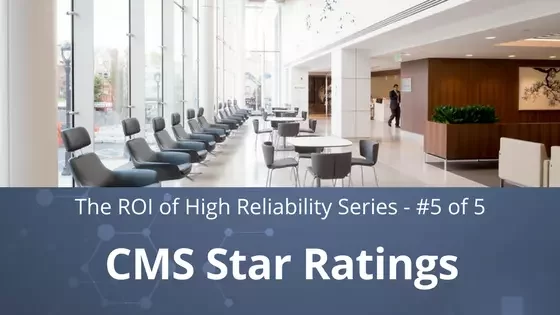
The 5 Key Metrics That Drive High Reliability
In this series, we are exploring 5 key metrics that both drive a hospital towards high reliability but will also give an ROI on performance improvement initiatives beyond the initial financial investments.
Today, we are talking about CMS star ratings, read the other installments of the series here:
#1. Tackling High Readmission Rates (read step 1 here)
#2. Reducing HACs (read step 2 here)
#3. Increasing HCAHPs Ratings (read step 3 here)
#4. Improve Value Based Purchasing Scores (read step 4 here)
#5. Improve CMS Star Ratings:
The Overall Hospital Quality Star Rating is designed to help individuals, their family members, and caregivers compare hospitals in an easily understandable way. Improvements in the quality star rating also increase the rebate percentage, resulting in increases in revenue. Even a small increase in revenue can be a significant advantage in a competitive market.
In addition to the financial impact, these ratings affect a hospital’s reputation.
Therefore, it is imperative to score well.
The following actions can help improve CMS Star Ratings:
1. Improve Quality Across All Reported Measures
Particularly outcome measures and patient experience measures, which receive higher weighting (see chart).

2. Lower Adverse Events, Readmission Rates and Improving Preventative Care
We discuss how to lower readmission rates in detail in the first installment, here.
3. Adopt a High Reliability Mindset
A high reliability hospital must rely on proactive, high-tech constant checking. Routine digital rounding finds errors before they occur, creates an automatic follow-up infrastructure, gathers quality information to be used for performance improvement. Constant evaluation and improvement will begin to produce real results.
TIP: A digitally-based platform that streamlines effort, allows executive leadership to quickly assess performance improvement efforts, and sends real-time issues with a follow-up process is the only way to improve across whole facilities and systems. The platform must aggregate data for the whole facility, replacing outdated information silos.
